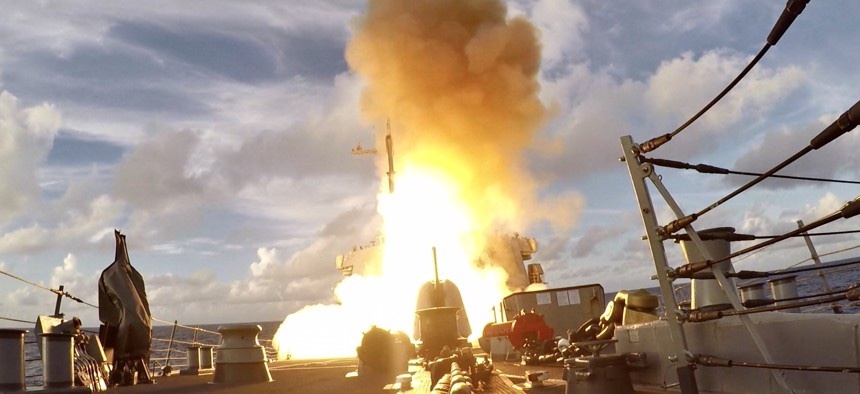18.10.2023

INDOPACOM wants to be able to find and hit 1,000 targets in 24 hours. Cheap drones are the answer—if DOD can make them quickly enough.
China’s most important asset in potential war with the United States is “mass,” says Deputy Defense Secretary Kathleen Hicks: “More ships. More missiles. More people.”
To counter that advantage, the Defense Department will launch an initiative called Replicator to create cheap drones across the air, sea, and land in the “multiple thousands” within the next two years.
Cheap drones, of the type Ukraine has deployed to great effect against Russia, can be produced close to the battlefield at much lower cost than typical Defense Department weapons.
“They can be used consistent with our principles of mission command, where we empower the lowest-possible echelons to innovate and succeed in battle. And they can serve as resilient, distributed systems, even if bandwidth is limited, intermittent, degraded, or denied.” Hicks said in remarks at the NDIA conference in Washington, D.C.
The drones also get at the main challenge the United States military would face in the Pacific in a fight with China: too many targets across a massive geographic space.
How many targets does that mean? “Here's a metric for me: 1,000 targets for 24 hours,” said Adm. John Aquilino, head of U.S. Indo-Pacific Command.
INDOPACOM has been working with DARPA on how to collect and integrate targeting data across the entire theater far faster than is typically done today, via a program called Assault Breaker II, Aquilino told the audience.
“The components in INDOPACOM have been experimenting now for the last five to 10 years with many of those unmanned capabilities. Those will be an asymmetric advantage. So operational concepts that we are working through are going to help amplify our advantages in this theater…there's a term, hellscape, that we use.”
Different services and research arms within the Pentagon have been researching swarming technologies for years. But the new effort is focused much more on scaling up the development and deployment of such technologies. As such, it will rely heavily on commercial technology. The Defense Innovation Unit will play a key role, Hicks said.
“The secretary [of defense] has asked me to personally oversee it, together with the vice chairman of the Joint Chiefs of Staff. And we’ll be supported by the director of DIU, who will help us bring the full power of DOD’s innovation ecosystem to bear,” she said.
Ukrainian forces are already using large swarms of unmanned munitions, linked together via mesh networks and running rudimentary artificial intelligence to recognize targets from satellites, according to Malgorzata Kieltyka, a founder partner at KG Legal.
But in some ways the success of such drones in Ukraine also highlights the difficulty ahead for DOD in trying to field large numbers of low-cost drones to fight China but without Chinese components. CNA analyst Sam Bendett said.
“These drones are essentially expendable technologies that can cause a completely disproportionate amount of damage relative to its overall costs. They are used in large numbers in Ukraine since not every FPV mission is effective, but at this point, both sides have thousands of trained FPV pilots who can operate them around the clock. The key to FPV drones is their cost - around $400-600 on average - made possible by easy purchase of Chinese-made components that make up these drones. These components are purchased in huge quantities by volunteers on both sides.”
As to the optimistic projection of producing thousands of such drones, said Bendett, it may not be sufficient “having many thousands may ultimately not be enough when the monthly count on both sides in Ukraine is in the tens of thousands of these cheap quadcopters," he said.
Said Hicks “We’ll also aim to replicate and inculcate how we will achieve that goal, so we can scale whatever’s relevant in the future again and again and again. Easier said than done? You bet. But we’re going to do it.”
Quelle: Defense One

